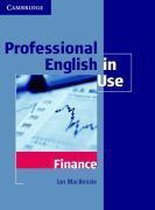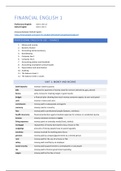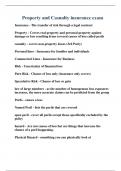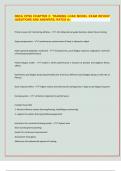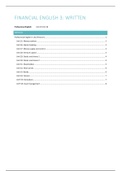Professional English: Unit 1 t/m 12
Oxford English Unit 1 t/m 3
Antwoordenboek Oxford English:
https://drive.google.com/open?id=13w8qFvMXn04ybFVySDgdhQXSEoQ8cCRf
PROFESSIONAL ENGLISH IN USE – FINANCE
1. Money and income
2. Business finance
3. Accounting and accountancy
4. Bookkeeping
5. Company law 1
6. Company law 2
7. Accounting policies and standards
8. Accounting assumptions and principles
9. Depreciation and amortization
10. Auditing
11. The balance sheet 1
12. The balance sheet 2: assets
UNIT 1: MONEY AND INCOME
bank deposits money in bank accounts
bills requests for payment of money owed for services (electricity, gas, phone)
bonus extra money for meeting target or good results
budget a financial plan showing how much money someone expects to earn and spend
cash money in notes and coins
commission money paid to salespeople and agents
currency money used in a country
fees money paid to professional people (lawyers, architects
health insurance financial protection against medical expenses for sickness or accidental injuries
income money someone receives or earns
living expenses money spent on everyday needs (food, clothes)
mortgage repayments of money borrowed to buy a house or flat
outgoings amounts of money people have to spend regularly
overtime money received for working extra hours
pension money paid by company/government to a retired person
rent money paid for the use of a house or flat
salary money paid monthly by an employer
social security money paid by government to unemployed or sick people
tax money paid to finance government spending
wages money paid by the day or hours
, UNIT 2: BUSINESS FINANCE
Balance sheet Shows company’s assets (the things it owns), liabilities and capital
Bonds loans that pay interest and are repaid at a fixed future date
Capital Money needed to set up or start a company
Debt Money that is owed (will have to be paid)
Dividend Part of profit paid to shareholders
expenses uitgaven
Financial statement Information about their financial situation
Interest the amount paid to borrow the money
Investors Individuals/financial institutions that lend money to companies with bonds
Liabilities Debts of a company: long- and short term (goods or services provided on credit)
Loan Money borrowed from banks
profit winst (ookwel earnings of net income)
Profit and loss account Shows company’s revenues and expenses during particular period
Retain keeping earnings for future use
revenue omzet
Share capital Money provided by shareholders
Shareholders People who invest money in shares – they own part of the company
Shares/equities Certificates representing units of ownership or a company (aandelen)
Working capital/funds Money a business uses for everyday expenses / has available for spending
UNIT 3: ACCOUNTING AND ACCOUNTANCY
Accounting Recording and summarizing an organization’s transactions or business deals and
reporting them in the form of financial statements
Annual accounts Where companies apply or use the standards
Auditing Examining a company’s systems of control and the accuracy (nauwkeurigheid) of
its records, and looking for errors or possible fraud
Bookkeeping day-to-day recording of transactions
Creative accounting Recording transactions and values in a way that produces a false result
External audit Done by an independent auditor (not an employee of the company)
Financial accounting bookkeeping and preparing financial statements for shareholders and creditors
Internal audit Done by company’s own accountants or internal auditors
Management Use of accounting data by managers for making plans and decisions
accounting
SEC Securities and Exchange Commission that sets rules on stock trading
Standards Rules (UK word) established by Accounting Standards Board (ASB)
True and fair view Accounts of British companies have to give a true and fair view of their financial
situation


